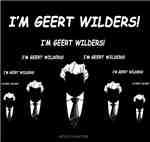Early Politically Correct Furniture: constructivism
Art Daily: "UEA Collection of Abstract and Constructivist Art Exhibit at Sainsbury Centre for Visual Arts " Constructed, the most extensive exhibition of the UEA Collection of Abstract and Constructivist Art, Architecture and Design, opened at the Sainsbury Centre. The collection, which was founded in 1968, features sculpture, painting, graphics and design, together with architectural models, stage sets and furniture. Works by David Bomberg, Marcel Breuer, Charles Eames, Le Corbusier and François Morellet will be amongst those on display.
Constructed, the most extensive exhibition of the UEA Collection of Abstract and Constructivist Art, Architecture and Design, opened at the Sainsbury Centre. The collection, which was founded in 1968, features sculpture, painting, graphics and design, together with architectural models, stage sets and furniture. Works by David Bomberg, Marcel Breuer, Charles Eames, Le Corbusier and François Morellet will be amongst those on display.
- Caption: Rietveld chair -
The UEA collection began in response to the modernity of the University of East Anglia’s architecture. In 1968, UEA was one of England’s ‘New Universities’ with a bold concrete campus designed by architect Denys Lasdun to reflect the ambitious inter-disciplinary approach of the young institution. (...)
The earliest group of works in the exhibition date from between circa 1910 and 1930 and reflect the origins of a modern ‘movement’. Early exponents included artists and architects associated with the De Stijl Group such as Gerrit Rietveld and those associated with the Bauhaus in Germany such as Wassily Kandinsky.
Works in the 1910 - 1930 section of the show include a Le Corbusier chair and architectural model, a painting by Sonia Delaunay, the Pravda Tower model by the Vesnin brothers, Rietveld chairs, a charcoal drawing by David Bomberg and 2D works by Wassily Kandinsky and Lazlo Moholy-Nagy.
Artists began making work now described as ‘constructivist’ in the second decade of the twentieth century. The First World War and the creation of a new social order through the Revolution in Russia were instrumental in causing many artists to rethink how art and design shapes the way people live.
A visual language of order and clarity drew some inspiration from other abstract movements but more importantly, embraced the possibilities presented by rapid technological development and engaged with other disciplines such as mathematics, science and architecture. (...) >>>
Described here are the attempts by the Leftist movement to deconstruct Western civilization. Across the board they have been extremely successful. Hardly anything has retained its original meaning: the most favored rhetorical trick is the 'Orwellian' practice of changing definitions: 'true freedom through the state' and other such oxymorons.
This is related to the subjectivist, Kantian notion that thought creates reality: "art and design shapes the way people live." This is not just wishful thinking, it also objectively a mistake; but it does corrupt reality to a shocking extent.
The 'modern' movement is another misnomer suffering from a corrupted definition. In fact, the movement set in motion by subjectivism was anti-modern. Modernism itself stands for the values of the Enlightenment, which the anti-modernists sought to counter: reason, individual liberty, limited government and free trade. Today, we know them as Postmodernists. We often think of them as monolithically Leftist, but they have a closeted Rightist branche as well ...













No comments:
Post a Comment